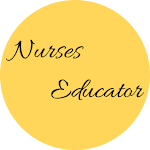Nursing Education Teaching and Learning in Online Learning & Distant Communities
Teaching and Learning in Online Learning Communities In Nursing Education
Higher education may have reached a tipping point at which the question about how to deliver a course is no longer whether it should be offered online, but whether it should be offered face-to-face. Three fourths of all colleges and universities give students the choice of taking a course online, which increases to more than 90% if examining only 2-year colleges (Parker, Lenhart, & Moore, 2011).
Online learning is no longer synonymous with distance education. The vast majority of institutions offer online courses to their residential students, too. And growing concern for the environment makes online delivery the “green” choice, with a 90% reduction in energy and carbon dioxide emissions because travel is not necessary (Roy, Potter, Yarrow, & Smith, 2005). Students have embraced online learning.
More than 7.1 million students who were enrolled in college in 2013, or 33.5% of the population, had taken at least one course online (Allen & Seaman, 2014). In the same survey, 66% of academic leaders agreed that online education was critical to the long term success of their institutions, with 77% viewing achievement of learning outcomes equivalent or better with online rather than face-to-face instruction.
English speaking countries have
led the way in international higher education ever since World War II (
Marginson , 2014). The West has exploited global developments in communications
and information technologies to export online learning across time zones and
borders. The result is a one world approach to science, language, educational
policies, and massive open online course (MOOC) offerings that have put higher
education within the grasp of a geographically and socioeconomically mobile
international community.
The online courses and programs offered today are just as likely to attract students who are living on campus as those who live at a distance. Indeed, even students living on campus may prefer learning from the comfort of their dorm room where they can access course information and work on their assignments when and where it is convenient for them.
This increased use of online learning in higher education has occurred for a number of reasons. Today’s learners expect ready access to course offerings and flexibility in scheduling to meet their educational needs (Parker & Howland, 2006). The majority of college students use laptops, smartphones, or tablets in class (Parker et al., 2011) and younger students cannot recall a time when computers and the Internet did not exist.
A few students are starting to question the value of the faculty in the classroom when they perceive they can search the Internet to learn whatever they need to know (Johnson, 2014). The nursing shortage, improving quality of available technology, and existing evidence that learning outcomes from in class courses and online courses are similar are other factors that have contributed to the proliferation of online learning (Baldwin & Burns, 2004).
Online learning has a significant presence in nursing education with an ever-expanding number of programs being offered in this mode, especially for those students who are seeking BSN completion and graduate degrees. Providers of continuing education programs also choose online technology to reach larger audiences of health care professionals who appreciate the flexibility and convenience of meeting their educational needs in their own homes.
Many nursing faculty are integrating aspects of online learning into courses that are primarily taught in the classroom in “real time,” thus creating blended or hybrid courses that maximize the use of web-based learning resources. For example, the “flipped classroom” is a pedagogical model that can be delivered in a variety of ways (Critz & Knight, 2013).
Flipping involves altering how time in the classroom is spent (Barra, 2014). Students are expected to prepare before the class meeting by accessing online materials including readings, lectures, quizzes, videos, narrated slide presentations, and other media. The flipped classroom has spurred the conversion of face-to-face classes to blended delivery.
In some instances, students and faculty may meet entirely online. Interaction is done through social networking instead of meeting face to face. Online learning is also facilitating the development of an international learning community within the nursing profession, as nurses from around the world discover they can access educational offerings to meet their learning needs.
Even with the increasing presence of technology in higher education, teaching in online learning communities (OLCs) remains a new experience for many nurse educators. Engaging successfully in online learning requires faculty and students to re-conceptualize their roles as teachers and learners in the teaching learning process. In addition, several institutional issues must be considered when the decision is made to implement online education.




Give your opinion if have any.